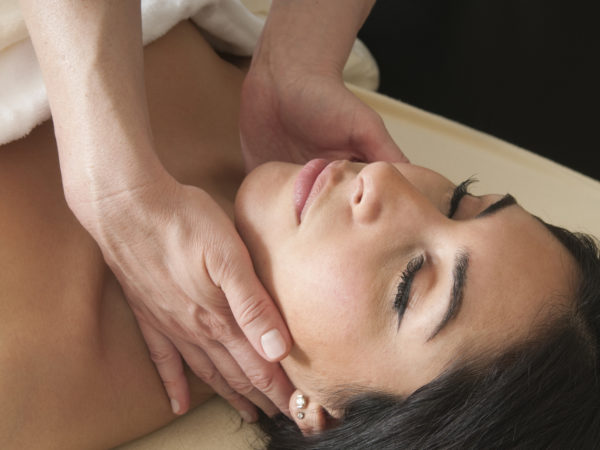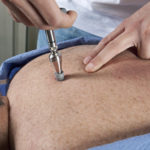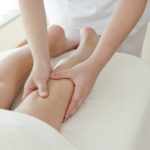Lymphatic Massage Therapy

What is lymphatic massage?
Lymphatic massage, also called lymphatic drainage or manual lymph drainage, is a technique developed in Germany for treatment of lymphedema, an accumulation of fluid that can occur after lymph nodes are removed during surgery, most often a mastectomy for breast cancer. Lymphedema can also be present at birth or develop at puberty or during adulthood. This type, known as primary lymphedema, can affect as many as four limbs and/or other parts of the body. The cause is unknown. Lymphatic drainage massage for conditions other than lymphedema is not medically recommended, although it may be promoted by some therapists.
What conditions is lymphatic massage used for?
Up to 25 percent of breast cancer patients whose surgery includes removal of lymph nodes in the area of the armpit eventually develop lymphedema. The condition can also occur in the legs or other parts of the body if lymph nodes are removed in the course of other types of surgery – for melanoma, colon, prostate or bladder cancer, for example – or are damaged by radiation treatment, infection or trauma. Symptoms include swelling and pain near the site of the removed or damaged lymph nodes. Lymphedema can occur immediately after radiation therapy or surgery, or weeks, months, and even years later.
What should one expect on a visit to a practitioner of lymphatic massage?
A lymphatic massage session for women who develop lymphedema after surgery for breast cancer starts with light massage on the surface of the skin of the neck. The therapist gently rubs, strokes, taps or pushes the skin in directions that follow the structure of the lymphatic system so that accumulated lymph fluid can drain through proper channels. Lymphatic drainage is very gentle, is not painful and doesn’t have a stimulating effect. Each session lasts from 45 to 60 minutes, and therapy usually is performed once a day four or five times a week for two to four weeks. One study showed that the greatest reduction in swelling from lymphedema occurs in the first week of treatment and stabilizes during the second week.
Are there any side effects or conditions where lymphatic massage should be avoided?
The National Lymphedema Network lists four circumstances under which lymphatic massage or drainage should be avoided:
- When patients who have developed lymphedema after surgery experience a sudden, marked increase in localized swelling. Under these circumstances, patients are advised to stop treatment and to see their physicians for evaluation as soon as possible.
- Patients with a sudden onset of lymphangitis (an infection) should immediately discontinue treatment until the infection is treated and completely clears up. Patients who are at increased risk for blood clotting should be tested to rule out deep-venous thrombosis before being treated. During treatment, these patients should be followed closely, and testing should be performed on a regular basis.
- Patients who have congestive heart failure must be monitored closely to avoid moving too much fluid too quickly, which could put a strain on the heart.
- When pain is present, treatment should be discontinued until the underlying cause has been determined and the pain subsides.
Is there a governing body that oversees or credentials practitioners of lymphatic massage?
Lymphatic drainage and massage practitioners may be physicians, nurses, physical or occupational therapists or massage therapists. In addition to their traditional course work, most require additional instruction in lymphedema therapy. Guidelines for training have been established by the Lymphology Association of North America, which administers certification examinations.
How does one get in touch with a practitioner of lymphatic massage?
To find a therapist skilled in lymphatic massage, visit the National Lymphedema Network website. Your physician may also be able to recommend someone who treats lymphedema and provides lymphatic massage.
Are there other therapies that might work well in conjunction with lymphatic massage?
In addition to lymphatic massage, patients may be advised to do self-massage following instructions from their therapists, as well as special light exercises designed to encourage the flow of lymphatic fluid out of the affected limb. Some patients may also be advised wear compression garments such as long sleeves or stockings designed to compress the arm or leg and encourage lymphatic flow out of the limb.
Other recommended therapies for lymphedema may include wrapping the affected limb to encourage the fluid to flow back out of the limb into the trunk, or pneumatic compression which involves wearing a sleeve over the affected arm and leg that is connected to a pump that intermittently inflates it, putting gentle pressure on the arm or leg and thereby moving the lymph fluid away from the fingers and toes and reducing swelling. The combination of these therapies plus lymphatic massage is called complete decongestant therapy (CDT). This approach usually is not recommended for patients with high blood pressure, diabetes, paralysis, heart failure, blood clots or acute infections.
What is Dr. Weil’s view of lymphatic massage?
Dr. Weil believes that lymphatic massage is a worthwhile treatment for lymphedema, but he emphasizes that individuals who do not have lymphedema do not need lymphatic drainage, no matter what health claims are made for it. He notes that some internet sites warn of the health consequences of “sluggish lymphatic flow” and promote lymphatic drainage for all manner of supposed benefits ranging from detoxification of the body, regeneration of burned, injured or wrinkled tissue, anti-aging effects, and relief of sinusitis, bronchitis, ear infections, chronic pain, fibromyalgia, constipation, insomnia, memory loss, cellulite, and obesity. He also says he has seen lymphatic drainage promoted as a beauty treatment. However, Dr. Weil has not seen good evidence supporting any of these effects of manual lymphatic drainage. Dr. Weil emphasizes that manual lymphatic drainage is not a necessity for general health and explains that lymph fluid circulates as result of muscular contraction, including the muscles used during normal physical activity. As long as long as your lymphatic tissues or lymph nodes have not been damaged or removed, Dr. Weil maintains that that there is no need to worry about lymphatic flow and drainage.











